Alignment in Dungeons & Dragons is one of those concepts capable of igniting the most fiery of arguments, in part due to the varied approaches to the concept. Is alignment a planar truth, baked into the lore and worldbuilding, or is it simply a roleplaying tool? How can you use alignment in your game? Should we just chuck alignment into the trash?
We'll cover all of this, plus discuss some creative ways to use it at your table. Let's jump in!
- What Is Alignment?
- Approaching Alignment As a Setting's Cosmic Force
- Approaching Alignment As a Character's Personal Moral
- Using Alignment for Campaign Stories
- Talking About Alignment At Your Table
- Using Alignment in Roleplay
What Is Alignment?
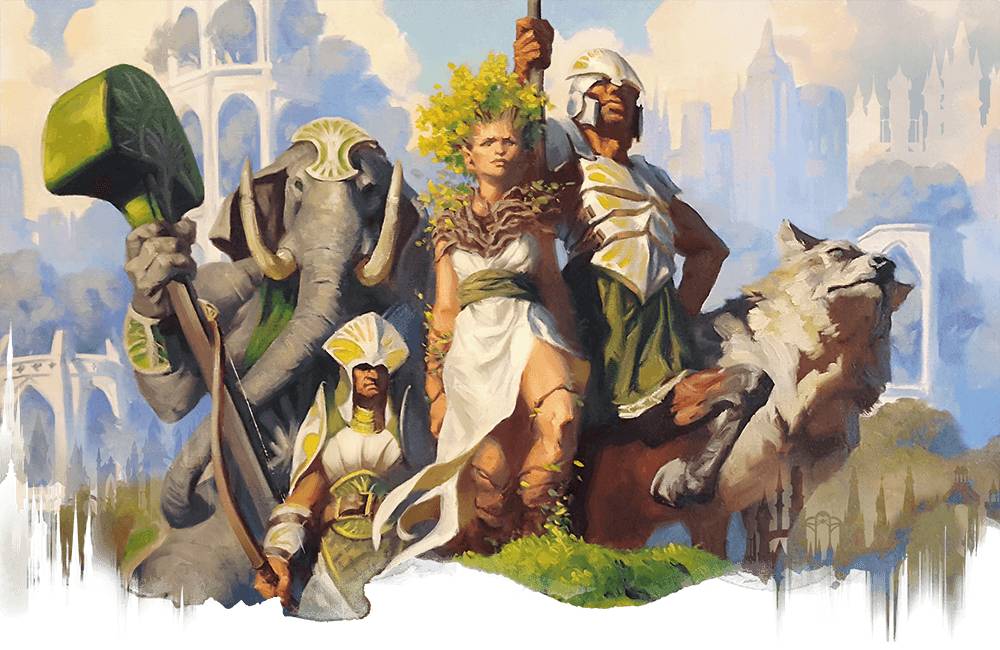
Alignment has been a part of D&D since its earliest days and has changed throughout the game's lifespan.
Broadly speaking, alignment describes a creature's principles and outlook on life. It's charted on two separate, contrasting lines, and the center of each lies neutrality—either moral ambivalence or a desire for balance. The axis of good and evil describes a creature's morality, while the pull between law and chaos reflects their outlook on society and order. Put the two lines together, and out comes the alignment charts you've probably seen everywhere.
Within the game, alignment is generally approached in one of two ways: as an indicator of a character's personal worldview; or as a larger force in the setting's cosmology, dictating power struggles against the opposing sides.
Approaching Alignment As a Setting's Cosmic Force
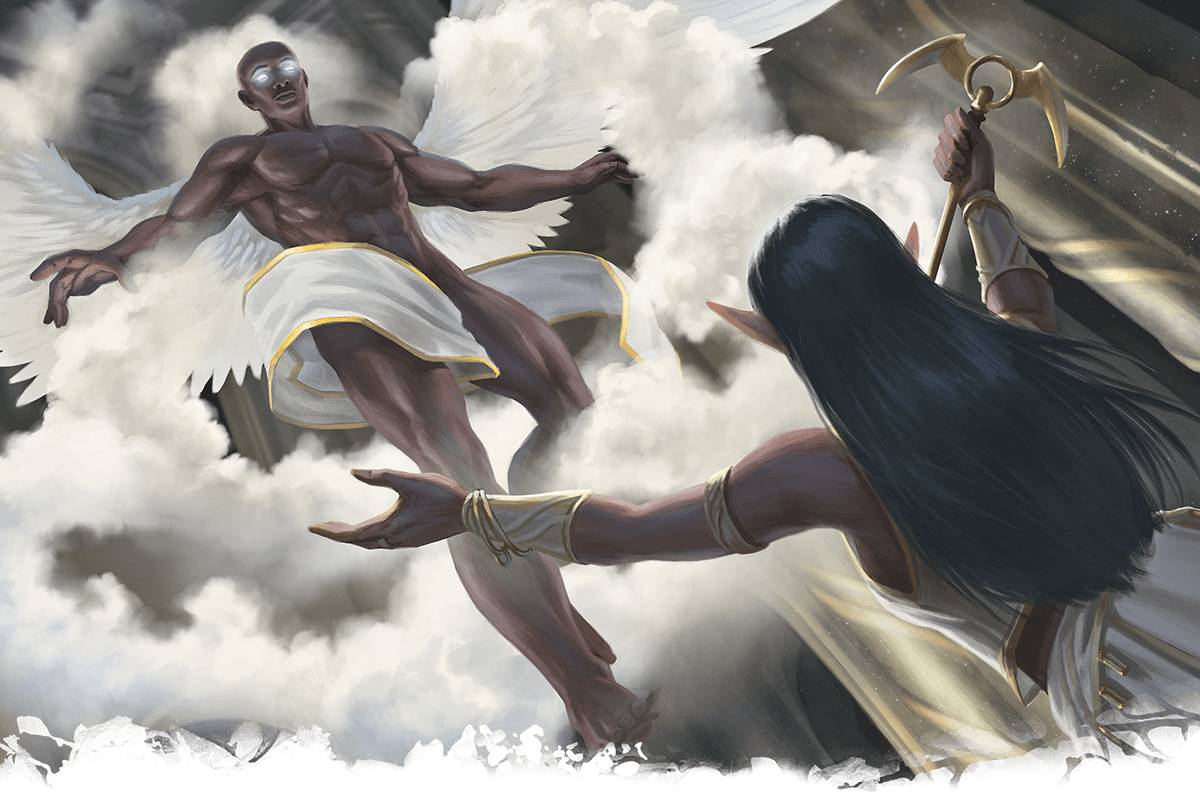
In the early days of D&D, alignment was imagined as a cosmic force that gripped the world. We can see this in the setting planes, for example, which embody deep philosophical truths. Elysium isn't just a place full of celestials who happen to be good, just as the Nine Hells don't simply house creatures with evil tendencies. Those planes and their creatures are, and always will be, the definition of good and evil. A barbed devil, for example, is literally a part of the larger forces of law and evil that fiercely fight against chaos and goodness.
This approach can provide a sense of shared understanding and stability many players enjoy. Players can generally expect certain creatures to act in accordance with the alignment they embody. A red dragon spotted in the distance is bad news. Similarly, no amount of Charisma will convince a being of absolute law, like a modron, to become an agent of chaos. The occasions when a creature strays from its expected alignment are rare and, therefore, a massive deal!
Characters in these games may also have more rigid restrictions and expectations in their class, backgrounds, gods, or patron. Paladins and clerics, for example, are commonly expected to share their deity's alignments. Similarly, a draconic sorcerer who channels the fiery power of a red dragon might not be permitted to be lawful good—the exact opposite of a red dragon's chaotic evil alignment. These restrictions put the cosmic rules into practice, requiring characters to make and embody a philosophical choice. Characters must ally themselves with one of the cosmic courses sweeping through the world and roll with the consequences... So no pressure!
Approaching Alignment As a Character's Morals
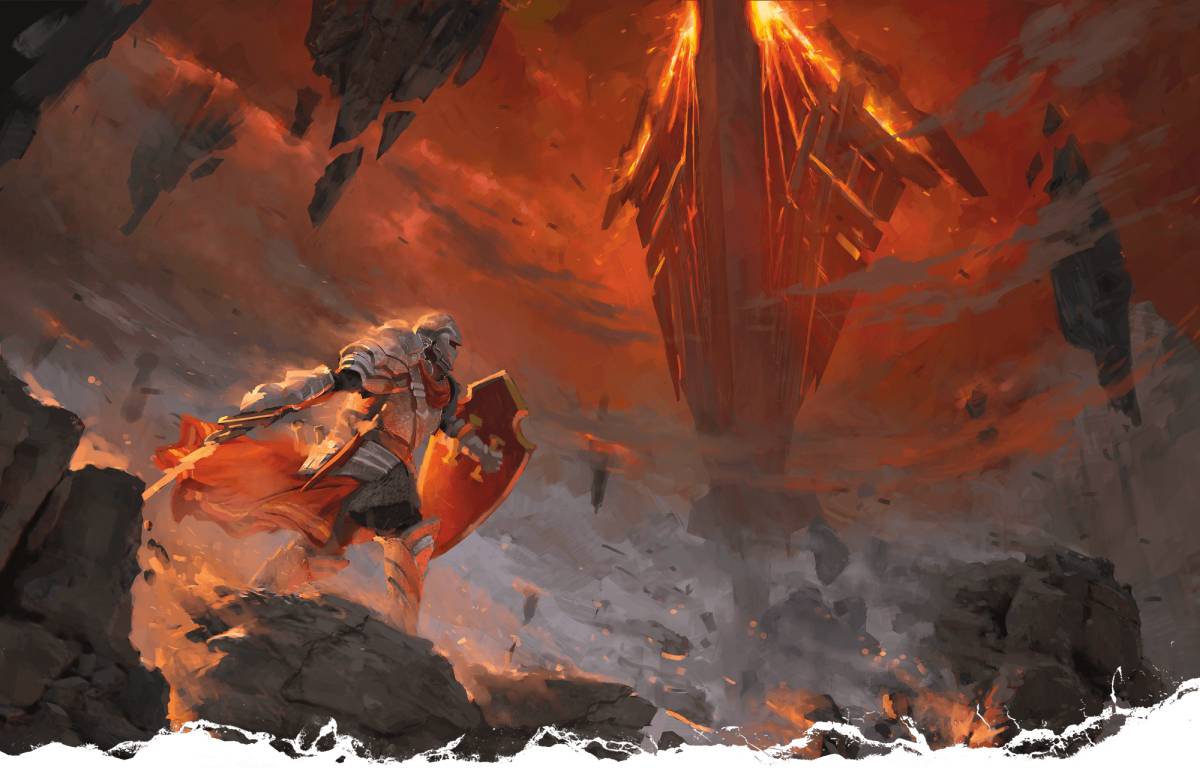
Some games eschew the cosmological approach, keeping alignment strictly descriptive of a creature's outlook on life. At these tables, a character's alignment may be used to guide their choices and roleplay and often stems from a personality trait, such as an ideal or a bond. For example, a rogue with the Criminal background idealizes honor and has an internal code of law she follows, and that includes a moral objection to stealing from poor folks just trying to survive. As a lawful good character, this code guides her when she chooses jobs or targets.
In this approach, creatures aren't forever bound by their alignment; when a character makes choices that stray from their alignment, it might shift. If our lawful rogue abandons her internal code, opting into ethically-questionable jobs indiscriminately, the player may decide to shift her alignment toward chaotic.
Using Alignment for Campaign Stories
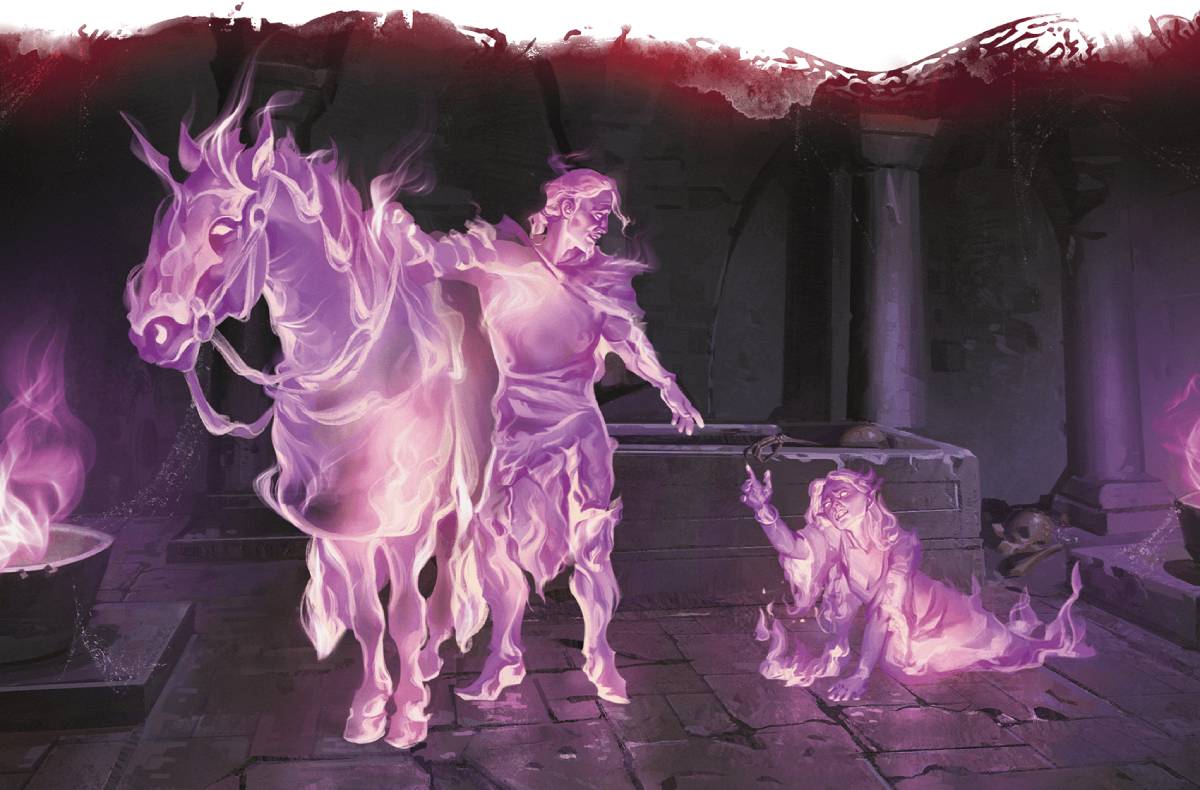
Alignment can be excellent fodder for stories, and you can tell interesting campaigns with alignment at the core of the story. Here are a few options:
Shades of Gray. Stories centered on contrasting viewpoints on the nature of good and evil are one of my personal favorites. Creatures in a Shades of Gray story don't fit neatly into moral categories, which often leaves characters questioning who or what is evil. For example, a villain engages in seemingly evil actions to bring about change for good. Setting like Eberron and Ravnica, with their many factions and noir intrigue, are perfect for this kind of story.
War of Good and Evil. In a traditional "good versus evil" story, the difference between the two sides is clear, and the dramatic tension lies in the question of which side will win. In Dragonlance: Shadow of the Dragon Queen, for example, there's no question that Takhisis, the Dragon Queen, is categorically evil and must be stopped. Whether good will succeed in defeating her is the question of the campaign. This type of story is a classic for a reason, and there is no shortage of evil creatures in the game for you to utilize.
Chaos Shall Reign. For a twist on the good-against-evil story, substitute the forces of law and chaos. The unending war between devilish law and demonic chaos is a classic option and is explored in adventures like Baldur's Gate: Descent Into Avernus.
Alternative Alignment
If you enjoy the cosmological framework but don't love the game's alignment as written, you can create alternative axes and choose entirely different forces. Simply switch out the traditional alignment forces for a different pair of opposite ideas. I like to choose a philosophy or abstract concept I find interesting and then decide on a contrast. Simple concepts can sometimes be easier to put into play, but the options are truly endless. You can create two axes that intersect or just choose one.
Here are some examples of opposing forces:
- Creation and destruction
- Empathy and apathy
- Growth and decay
- Material and spiritual
- Light and shadow
- Joy and grief
- Esoteric and superficial
Instead of focusing on two sets of competing forces, you could also set up your forces in larger groups. For example, you could use the inner Elemental Planes of Fire, Air, Water, and Earth as your primary cosmic forces. Or if you're a Magic: The Gathering player, you could use its five colors—white, blue, black, red, and green—as your group of forces. The five colleges detailed in Strixhaven: A Curriculum of Chaos are based on opposing color combinations.
Alternatively, create your own group of forces, drawing inspiration from your favorite media. Here are just a few possibilities:
- In Sailor Moon, sailor scouts are aligned with celestial bodies, which represent various virtues, and their choices affect their powers and guide their behavior. For example, Jupiter provides strength, protection, courage, and thunder energy. You could directly take Sailor Moon's planetary and celestial system or build your own.
- Persona offers a different framework, where characters are generally aligned with a mythological figure whose story echoes theirs. This is an excellent option for folks who love mythology. Players could choose from their favorite mythological figures from real world history or write their own entirely. If there is a particular type of story you want to tell, you could guide your players to a set of similar themes, for example, Persona 5's themes around rebellion.
- Creatures in Digimon have crests roughly based on their most prominent positive traits, like courage, destiny, hope, knowledge, or reliability. A D&D world that draws inspiration from here might focus less on positive versus negative traits and instead explore how those traits work together and what it looks like to grow or stagnate in those attributes.
- Shadow and Bone's worldbuilding, apart from their political factions, is built on whether or not you have access to magic and, if so, which kind of magic. You could use the various kinds of magic, Corporalki, Etherealki, and Materialki, as a basis for your world's forces.
Talking About Alignment At Your Table
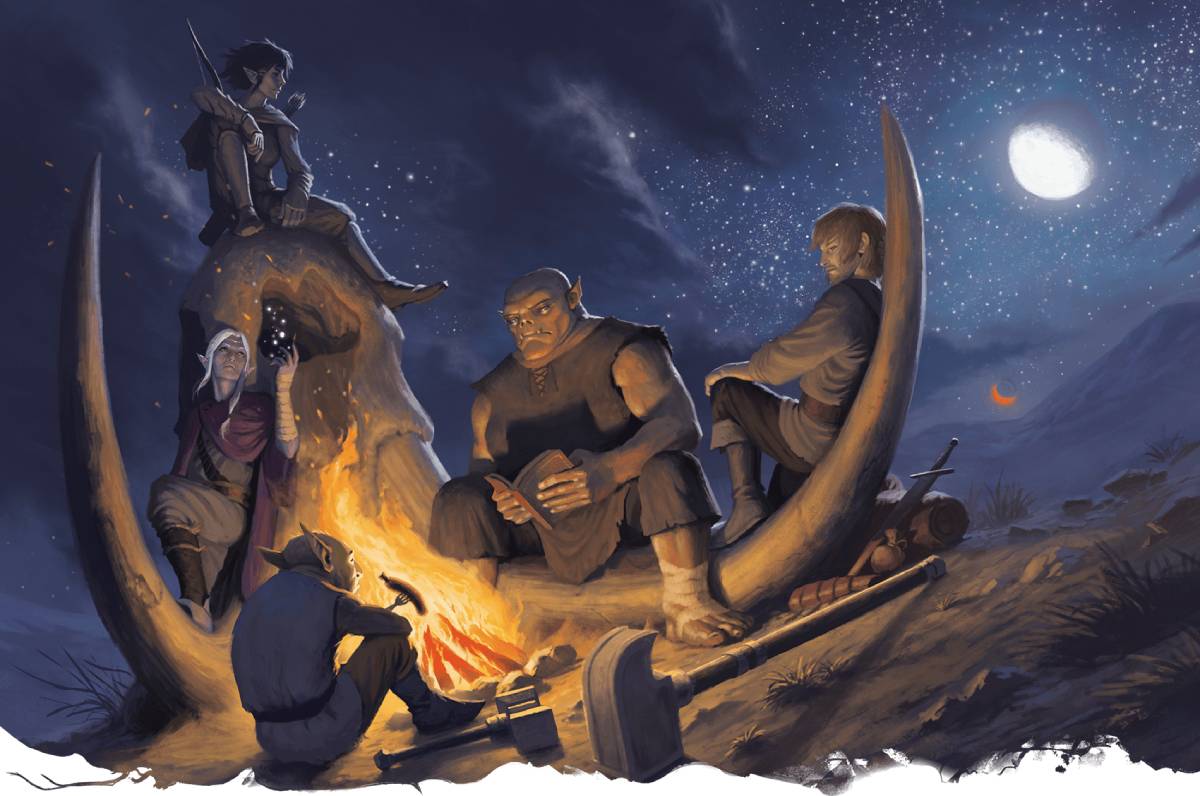
It's important to talk with your group about your approach to alignment, as even within the same approach to alignment, definitions of its concepts vary considerably. In Dragonlance, for example, the gods of good are concerned with ensuring mortals have the ability to make their own moral choices, and the gods of evil embody power and encourage placing individual desires above communal needs. Contrast this with Exandria, where the Prime Deities of good and neutrality work to maintain the sanctity of life, while the evil Betrayer Gods embrace destructiveness and death.
If you're a Dungeon Master, it's a good idea to define the alignment axis in your setting and describe what those concepts mean to you and your world. Sharing such definitions with your players enables them to make informed decisions for their characters. Getting everyone on the same page reduces the risk of arguments popping up mid-game.
Include alignment in your session zero topics when you begin a new campaign, and if you are mid-campaign, it's perfectly fine to throw a session zero right where you are! Here are some questions you may wish to discuss:
- How strongly is alignment intertwined with your setting and worldbuilding? Do certain creatures strongly represent these intrinsic forces?
- How much agency do various creatures have? Do you assign one alignment motivation to a group of sentient creatures, such as humanoids?
- Are there any restrictions or rules in your world for alignment with classes, races, or backgrounds? How closely must a character's alignment align with their god or patron's?
- How do you view player actions in terms of alignment; what kinds of actions change a PC alignment, and in what timeframe? What are the consequences, if any, for alignment changes?
- How do you view features that interact with alignment, such as the detect evil and good spell? Do you use any magical items that have specific alignment requirements, such as the talisman of ultimate evil and the talisman of pure good?
Do You Even Need Alignment in Your Game?
Alignment can offer a variety of positive experiences, but it’s worth asking this question. If a player at your table finds alignment problematic or overly restrictive, the good news is you don’t need it. Concepts like alignment exist to serve the collective storytelling that happens at your table. If something isn’t enriching your group’s experience of the game, you can collectively choose to toss it aside.
Using Alignment in Roleplay

However you approach alignment, remember that your character is a whole, complex being, and their values go deeper than simply filling in the alignment spot of your character sheet. What truly drives them, and why? How did they arrive at their moral outlook? What kinds of choices have they made in the past, and how have they previously solved ethical dilemmas? To begin to answer these kinds of questions, think about your character's ideals and bonds, and connect them to their ethics.
For example, our lawful good rogue comes from poverty, is deeply committed to her family at home, and idealizes concepts like honor and charity. She expressly steals from wealthy, powerful people to address the imbalanced distribution of wealth in the city—wealth gotten by evil exploitable of vulnerable people. Her strict code of ethics guides who she will steal from and how. She doesn't kill indiscriminately and is careful about who she may affect with her actions. In roleplay, she prefers stealth and information gathering, carefully plans thefts, reduces the risk to innocents, and tries to talk her way out of things before resorting to violence.
- Everyone believes in something, even neutral or unaligned characters. For some characters, it might be valuing balance between all the cosmic forces. For others, it might be an idea of agency or the freedom to choose for oneself.
- When playing characters with strong belief systems, such as lawful good paladins, alignment doesn't allow anyone to behave poorly and excuse it with, "It's what my character would do." We discussed this previously in the roleplaying villainy article, but it also applies more broadly. Lawful good, for example, doesn't always equal lawful foolish; a lawful good character doesn't follow every rule without considering consequences for their fellow adventurers, or they won't have fellow adventurers for long!
- Remember to remain respectful of your fellow players, regardless of your character's alignment, and work as a group of players seeking to have fun together.
- If disagreements arise—like a perceived mismatch between a character's alignment and actions—discuss it calmly and kindly. Often such disagreements can be remedied by seeking clarification about the character's motivations or checking for misunderstandings. DMs should be cautious not to override a player's agency in making choices for their own characters. It can also be helpful to revisit the campaign's alignment definition and make changes to clarify as needed.
Align Yourself
Alignment can provide a valuable framework for character building and roleplaying, as well as an arrangement of cosmic forces for your larger world's tension. As a concept, it is flexible, allowing you to choose an approach that works best for your table and the story you're telling together. Outline your definition of its concepts, and discuss it with your fellow players to ensure everyone is on the same page. Ultimately, regardless of your chosen approach, alignment exists to serve the collective storytelling happening at your table and enrich the fun experience for everyone.
Alyssa (@alyssavisscher) frequently rambles on Twitter about D&D. She especially enjoys analyzing its overall structure from a newbie perspective, bringing larger concepts to small, bite-sized pieces. She’s a parent of four, neurodivergent, disabled, and is impressively terrible at small talk.








-
View User Profile
-
Send Message
Posted Apr 18, 2023Same, but in mine, they're less factions and more forces with various representatives that have their own interpretations of what these forces mean.
-
View User Profile
-
Send Message
Posted Apr 18, 2023Although that WOULD make for an unhinged villain. As in the idea of a templar who believes in their mind that there doing justice when really they're causing massive harm to civilization. Rather psychotic I would say.
-
View User Profile
-
Send Message
Posted Apr 19, 2023That's cool. It's messy and I like it.
-
View User Profile
-
Send Message
Posted Apr 19, 2023A lawful good paladin can be just as sadistic and cruel to meting out divine justice to evil targets as the evil player might be. it is all dependent upon one's point of view. In D&D 3.5 there was the option of evil paladin for evil deities. There was also an alignment shift. You could shift to say Neutral Good, or Lawful N for a good deity, I created an Lawful E hobgoblin paladin of the red knight (Lawful Neutral) in Forgotten Realms. That was loads of fun.
-
View User Profile
-
Send Message
Posted Apr 19, 2023Great Article!
-
View User Profile
-
Send Message
Posted Apr 19, 2023I personally disagree with not being able to be an evil paladin. Just think of the fact that the Oathbreaker, Vengeance, and Conquest paladins exist. These three subclasses all are driven by an evil act, the whole point of a vengeance paladin is trying to get revenge, if your whole goal is to go and try to kill someone in a hate-filled rage and vengeance and you have made an oath to yourself to try and kill someone that isn't a very good thing if you ask me. The conquest paladin's whole thing is that they are trying to take over everything and rule with total control, of course, you could do this "lawfully" but also they could be sworn to a devil or lawful being that is evil and just wants control so of course that paladin is not going to be good either. Plus, the conquest paladin could just find joy in the act of conquesting and be chaotic evil underneath an evil dictator. This is all just to say that there could totally be evil paladins, and I'm not even gonna touch the oathbreaker because people argue that it's not a legitimate subclass.
-
View User Profile
-
Send Message
Posted Apr 19, 2023The question that must be asked is "what does it mean to be a paladin?" The concept is based on the orders of holy knights from real-world history, such as the Knights Templar. They are the militant branch of a holy order. Do evil deities not have holy orders? If they have holy orders, why would they not have clerics and paladins?
In the Forgotten Realms, they absolutely do. Worship of evil deities is generally not welcomed in many major cities, so they are often relegated to being "cults" that meet in secret or exist on the fringes of society, but that is not universally applied across the Realms. In Westgate, a major city near Cormyr, there are temples to Umberlee, Loviatar, and Talos that are not hidden away or built in secret like they are in most of the cities along the Sword Coast.
For radiant damage - the spell Sickening Radiance is a prime example of radiant damage being presented as toxic, like radiation, as another commenter suggested. Necrotic damage being used by "good" characters is not likely to be a common thing, but I could see clerics of Kelemvor (L/N god of the dead) using necrotic spells regularly, and followers of Ilmater (L/G god of endurance) might submit to their bodies being used as zombies/skeletons to serve as a labor force after their death. Furthermore, druids in general, but particularly those of the circle of spores, as well as clerics of nature, life and death domains would see death as necessary to feed other life and to nurture the growth of new life. So necromancy (and by extension, necrotic damage) is not inherently evil - it is just used for evil purposes more often than for good.
-
View User Profile
-
Send Message
Posted Apr 19, 2023The fact that DnD alignment is such a meme these days makes it worth it. I was talking to my cubicle neighbor, and they know nothing about DandD but knew how to qualify someone using the DandD alignment system, just to me feels like part of the brand. Like Owlbears and Magic Missile, Alignment is just classic D and D, and I just kind of feel like it should be a meaningful part. I just wish people would think outside of class restrictions, or damage types, and focus on how it could be used in a whole new way.
-
View User Profile
-
Send Message
Posted Apr 20, 2023From the very beginning, alignments have been a case of inverted role-play. We slap alignments on characters and reverse-engineer how that should make them behave based on our own personal agendas. The resulting inter-player arguments have proven endless and often game-destroying.
Players have always used alignment to defend bad behavior at the table. Players have always used alignments as leverage to demand others role-play their characters in accordance with their outside interpretation, in an attempt to rob the owning player of their autonomy. What alignments have never been used for is realistic and actionable motivation.
People don't do things because they're good or evil. They're good or evil because of the things they do. Alignment systems should be completely replaced with actionable motivations.
-
View User Profile
-
Send Message
Posted Apr 20, 2023Maybe we could use a different system like you describe but we need something to give it life and meaning to the game. The only thing a disagree is on the bad behavior because there are people that will ALWAYS cause problems and destroy the game regardless if Alignments exist or not.
-
View User Profile
-
Send Message
Posted Apr 20, 2023I broke down alignment logically in an effort to create a universal system that is internally consistent and as portable (setting agnostic) as possible. What I ended up with was a set of four dualistic systems:
Mortal vs Incarnation:
As touched on in the article above, alignment is different between mortal races and what I like to call "incarnations", which are supernatural beings who exist more as a living representation of forces or ideals (gods, devils, elementals, etc). Mortals occupy a unique spectrum offered by free will, by which they can choose their actions and decide what part they will play in the cosmic tale; incarnations are bound by their nature. This allows for a consistent application of what the author called "cosmological alignment" as it pertains to beings which exist as an incarnation of justice, treachery, flame, or whatever grand cosmic principle, but retains freedom and intricate realism for mortal races (e.g., players). A mortal's alignment can change as their values and actions change; an incarnation's alignment is set by the nature of its existence. A mortal can be convinced or persuaded to act against its alingment; an incarnation cannot. A mortal can suffer emotional or mental anguish, or internal conflict, from acting against its alignment or it may not; an incarnation will suffer more serious existential effects from being forced or tricked into acting against its alignment in any way.
Sentient vs Non-sentient:
This one is quite simple; sentient mortal creatures derive their alignment from their beliefs, values, and understanding of the world around them, whereas non-sentient creatures act on instinct and their alignment is categorized by external judgement of their behaviors. Like incarnations, non-sentient creatures merely act in accordance with their nature, but unlike incarnations they have no grand cosmic idea driving their existence; non-sentient creatures may be manipulated or trained to behave in many different ways as long as their instincts are being fulfilled.
Law vs Chaos:
I classified this as the "why" of a character's actions, or a motivating force. Chaotic creatures are driven by instinct or personal desires; a chaotic evil person may be a bully or a sadist that draws joy from harming others and a chaotic good person may provide food for the hungry because they enjoy the gratitude and self-righteous feeling. Lawful creatures are driven by an external code or belief; a lawful evil person may perpetrate genocide because they believe it is necessary for their country's benefit, and a lawful good creature may sacrifice their life to save another because they believe it is the will of the gods. Creatures who are neutral on the scale of Law and Chaos are motivated by a balanced combination of external and internal factors; a neutral evil person might evict a poor family from their lodging because they have not made their payments, or because he despises what he sees as "lesser people", or both. A neutral good person might argue for expanded rights for other species because he believes it is just, or because he fears that allowing discrimination might one day impact him, or both. Neutral characters are not devoid of motivation, but they draw motivation from both ideals and desires with neither being dominant. They are no more likely to sacrifice their ideals for their desires than they are to sacrifice their desires for their ideals. They also do not likely feel motivated to strong extremes by either ideals or desires (not likely to be a religious fanatic or an addicted junkie).
Good vs Evil:
I defined this axis as the "what" of a character's actions, the actual substance and effect of what they do. This is one that many people seem to struggle with or want to argue about, or try to twist on its head for an edgy campaign ("The holy order were the REAL baddies all along!"). In actuality I think it's simple to define in a way that most people would find universally applicable: a good character is more likely to self-sacrifice for their goals, and an evil character is more likely to sacrifice others. A chaotic evil character wants to feel good, and is willing to sacrifice other people's needs and well-being to do so (creating the stereotypical sadist or bully). A chaotic good character wants to feel good, and is willing to sacrifice their own time, well-being, or needs to do so (creating the stereotypical robin hood, the charitable "influencer", etc). A lawful evil character wants to bring about some ideal or enforce some code, and is willing to sacrifice others to do so (creating the stereotypical cultist, tyrant, or debt collector). A lawful good character wants to bring about some ideal or enforce some code, and is willing to sacrifice themselves to do so (creating the stereotypical knight, humanitatian volunteer, priest, etc). Characters who are neutral on the Good and Evil axis are no more likely to sacrifice their own interests for someone else, nor to sacrifice someone else's interests for their own; they also are not likely to perpetrate extreme acts of either kind (laying down their own life, or murdering someone for coin).
I think this is a pretty reasonable interpretation that properly balances realism and player agency against fantasy and the supenatural, and has helped me as a DM to categorize NPCs and make them behave appropriately.
-
View User Profile
-
Send Message
Posted Apr 20, 2023My take on modifying the Paladin class for evil characters.
All other effects could stay the same, since Aura of Protection and Aura of Courage can fortify the paladin's wicked (and fiendish) allies and protect undead from good magic that turns, impedes, or smites.
The abilities of an evil paladin should be shady corruptions of the holy magic that defines the paladin class, even if you decide not to change how the ability functions in-game.
-
View User Profile
-
Send Message
Posted Apr 20, 2023I do feel that there is some rough edges porting evil character concepts into the Paladin and Cleric classes. D&D tends to have pantheons inspired by ancient world sources with player characters inspired by Christian Medieval tropes. The Paladin and the Cleric are based on the Medieval Christian Holy warriors who are both righteous and able to work miracle healing due to a good God. So then with healing, buffing allies, and turning undead baked into the class, it gets awkward when they try and make a "evil subclass." I wish there was more willingness to lean into the newer Warlock class representing the Evil Cleric and Paladin (with Hexblade) focusing on using greater powers to damage and curse enemies, and with the character concept around exchanging devotion for power, rather than devotion because of a belief in a higher ideal. However I think the Blackguard and the Evil Cleric are too ingrained in DnD already.
-
View User Profile
-
Send Message
Posted Apr 21, 2023I love me some lawful evil devils and chaotic demons and crazy total chaos Sladdi
-
View User Profile
-
Send Message
Posted Apr 21, 2023You can't get rid of alignment and then say an item can only be wielded by good or evil creatures, etc.
-
View User Profile
-
Send Message
Posted Apr 22, 2023If you look at any of the cultures on the receiving end of medieval crusades, they certainly wouldn't consider the Christian knightly orders heroic. And even within the medieval poetic chansons des gestes tradition, there are many 'blackguard' style figures (Ganelon being the archetypal one).
Earlier editions of D&D borrowed more from the 19th Century revival of Arthurian traditions. And even then, they missed the point a bit - paladins were expected to be like Galahad or Perceval, rather than the much more interesting flawed knights.
A flawed paladin that experiences downfall and redemption is a way better story arc!
-
View User Profile
-
Send Message
Posted Apr 22, 2023Great article, thank you.
-
View User Profile
-
Send Message
Posted Apr 23, 2023Very insightful article, which should give a lot of paths to managing the concept.
For me alignment is and always will be a part of everything in D&D though I break it down into several factors.
Inherit Alignment: This is when a species/race is naturally a specific alignment. Prime examples any being from the planes and dragons. This is really the easiest aspect of alignment to work with. That being said there is always exceptions, and just because they are one alignment or another doesn't mean they can't commit acts of the other. I have a recurring villain that I use, he is an Archdevil that serves under his mother who rules one of the layers of Baator, he tends to enjoy playing around on the Prime for various reasons. I often have him 'aid' the forces of good by doing simple things like leading a hero to an item ect, acts that seem benevolent. In his mind, however, it is an ends justifying the means. He is immortal so he plays the long game, if helping said hero kill said bad guy in the end plays into his overall goals he'll do it. He also has a few rules in regards to harming certain groups, but LE can have honour it just is on their terms.
Moral/Action Alignment: This is generally what is at hand for my players. You may choose what alignment you believe you are, but it will change on the cosmic wheel based on your actions. Sometimes I don't even directly tell them they've shifted right away, using it as a tool in a later encounter to show the consequences of their actions. In the end the universe decides where you rest but you have control over how you get there. This has, for me, allowed for some of the best roleplaying as the players can have their characters act as they feel they should but eventually have to face the results. Of course there is influence into this based on character choices, I'll use Paladins as they are the go to. In the past they, and Rangers actually, were alignment restricted to LG, or any G for Rangers. For me this still applies based on your Oath/Path, as there are just some that would not fit like a Chaotic Paladin couldn't take an Oath of Conquest. Or with say Monks, I still feel they fall into a Lawful branch as the discipline and order needed for that chosen way of life does not fit with a Chaotic mind.
Societal/Expected Alignment: This is where I toss most NPC and 'monsters'. It is also, for me, where the true issue with alignment is and all arguments generally sit. I'll uses Drow and Orcs as they are often the most common focused lately. These races have always been tagged as evil as have their gods, which it is kind of hard to be something else when your god demands you act one way and actually sticks their nose it it from time to time. Drow culture gets played on the elemental of betrayal, murder and other heinous acts to establish control to protect your position. Orc culture plays on brutish elements of survival of the fittest and the strongest leads. Now here is how I turn it around, and this applies to good and evil races, as a whole your average being is going to be straight up neutral. They just go about their lives trying to stay as under the radar as possible. Instead it is the power structure that is good or evil with the ruling or elite classes representing the typical alignment of their culture. Unfortunately within evil controlled societies that neutral citizen is more likely to be forced to commit evil acts to survive. Some real world examples look to Europe 1930-, uh we'll leave the end date open, multiple groups took power that without a doubt were evil by every measure of the word even though the average person was not. What happens with those typical people tends to fall to how much of their societies pressure they were able to withstand. I personally started doing it this way because of reading characters like Drizzt, their complete rejection of their society and culture made them unique and their stories compelling. If you've not read the books at one point his father even points out how glad he is Drizzt was able to escape the clutches of their society instead of just giving into it like he had.
-
View User Profile
-
Send Message
Posted Apr 24, 2023Was this article written by someone who plays 2nd Edition or something?
"How do you view features that interact with alignment, such as the detect evil and good spell?"
That sell has nothing to do with alignment anymore! It even links to the nerfed spell in 5E. It's such a poorly named spell because although it's kept around as a legacy spell, it no longer has anything to do with good, evil, or alignment. I house-rule mine to the old way it used to work.
-
View User Profile
-
Send Message
Posted Apr 24, 2023Article author here! You're totally correct that spell technically doesn't interact with alignment, as it appears in 5e. I started playing D&D with 5th edition, so never played second edition with the legacy versions of those features. But I have played with DMs who did play AD&D, and several of them have house rules around those legacy spells, features, and magic items that sound similar to those. I also have found that DMs who run their games and their world with the "alignment as cosmic force" approach, however, they may rule such legacy features differently, hence the suggestion to ask about those things.🙂